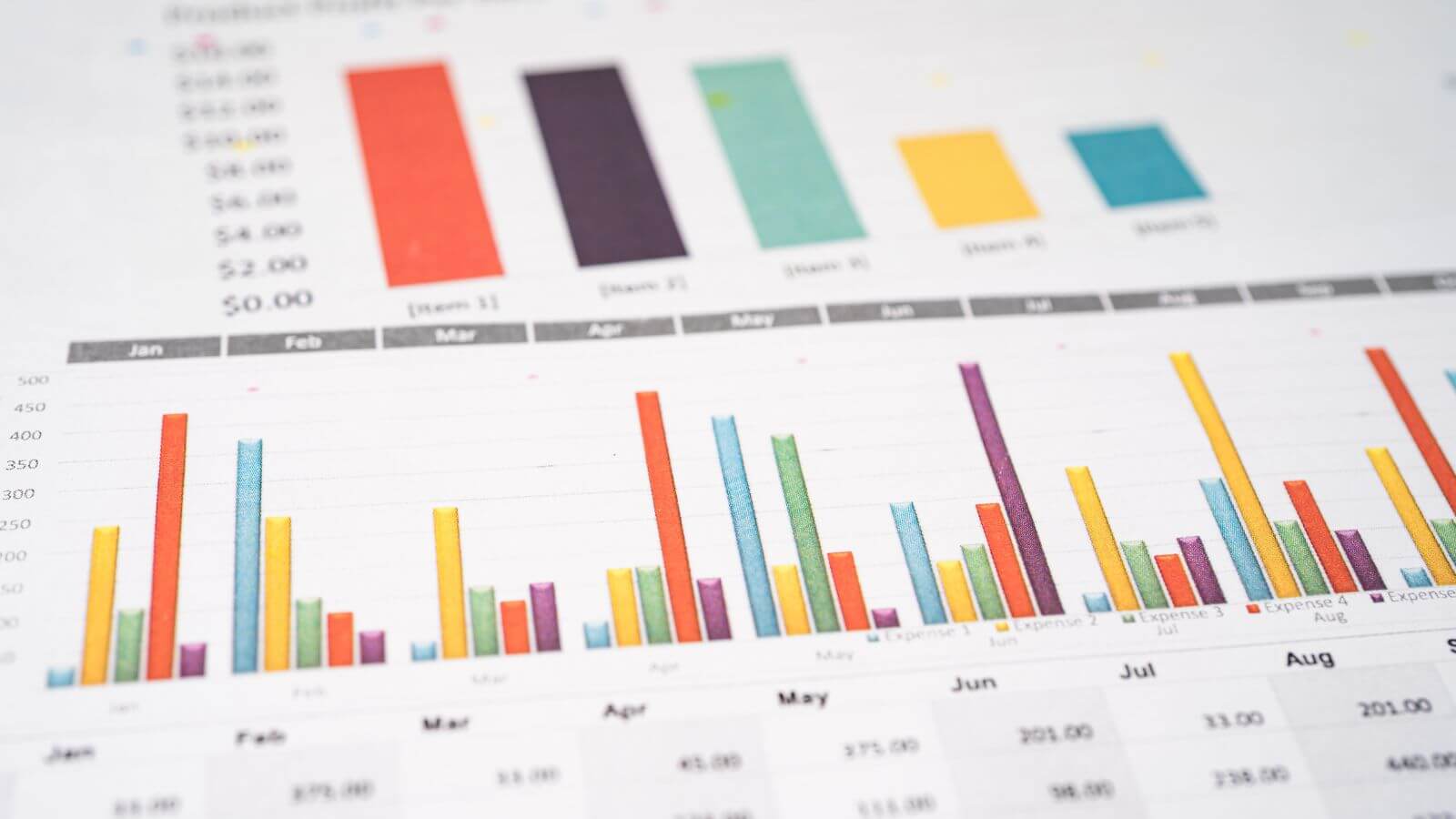Webinar Goals and Objectives for Measurable Success (With Examples)
The purpose of webinars is to promote brand awareness, achieve strong conversion rates, and better understand your audience. A successful webinar is not only engaging and entertaining but also a vital part of your lead management, as it contributes to stronger loyalty among your target demographic.
Still, it’s easy to neglect your main objectives when you’re caught up in daily business operations. You need to track and analyze your event performance regularly to ensure you stay on the path to success. Whether it’s higher conversion rates or greater attendee retention, establishing clear goals for your webinars allows you to develop an actionable plan that’ll realize these aims.

Webinar Goals and Objectives Defined
A webinar’s success depends on how many of your registrants actually show up, overall audience satisfaction, and conversion rates. These are broader end results to aim for in every event you host. However, each webinar should have a narrower, concrete focus you can measure to determine its individual success.
Honing in on webinar objectives allows you to:
- Establish a direction for your current and future webinars
- Measure success across all marketing channels
- Motivate your team to better connect with your audience
- Recognize areas where you can improve (and how to do it)
If your end goal is to increase webinar attendance, for example, your objective could be to increase your email list by 70%.
Examples of Webinar Goals
Set as many goals as you need to drive your webinar’s success. When determining your objectives, involve the whole marketing team for clearer communication and execution; everyone should be on the same page so they know what to strive for. Common webinar goals include:
- Lead Generation – Increasing lead generation is a great way to boost your webinar attendance rate and visitors to your website. To achieve this goal, you could launch new funnels in a set quarter.
- Customer Engagement – Engagement is important to keep your audience hooked until the webinar is complete. Time-sensitive discount links and codes, as well as creating post-webinar surveys can maintain attendee focus and participation.
- Brand Awareness – If you want to boost brand awareness through moderating webinars, consider setting an objective to reach your target audience across a set number of social media channels.
- Repeat Attendance — To convince attendees to sign up for future events, consider breaking up webinars into multiple sessions. Or, expand your email marketing strategies to include reminders of upcoming webinars for past attendees.
It’s wise to measure progress each quarter to ensure goals are met. If not, you may want to reevaluate them to be more realistic. Work with your marketing team to adjust objectives according to your finances, resources, demographic changes, and webinar urgencies.

Setting and Reaching Your Webinar Targets
A well-planned webinar goal is achievable and recognizes your business needs. Here are a few ways to set and reach your webinar targets for measurable success.
Identify Your Business Goals and Webinar Objectives
What do you want to achieve with your business? Greater traffic? Higher quarterly sales? Boosted brand awareness? Your long-term aims determine what drivers will get you there. Develop a few narrower objectives for your webinar, then work with your marketing team to decide which ones are most applicable to achieving your business goals.
Develop a Clear Plan
Craft and implement a well-explained plan on how to achieve your webinar goals before you host and record your events. Ensure everyone on your team is clear on the subject so your goals and objectives remain on task.
Check in Regularly
Don’t wait until a goal’s due date to see if it’s appropriate. Check each webinar for an increase in email responses, live attendance, and other progressions to ensure your objectives remain on track.
Make Changes as Needed
While a plan should ideally remain in place until all goals are accomplished, sometimes adjustments are necessary. Communicate with your marketing team to reevaluate and alter event objectives as needed so you continue to progress toward your target.
Stay the Course
While occasional alterations are expected, refrain from constantly changing goals; you need to let enough time pass to see if they’re effective. Stay the course unless you determine a new objective will noticeably benefit your webinar strategies. Even then, discuss any adjustments with your marketing team before implementing them.

Helpful Goal Frameworks
Utilize a framework to help you set new goals for your webinars. This gives you easy guidelines to follow so you maintain a proper focus and develop clear objectives. Below, you’ll find several frameworks to choose from that are applicable to nearly any objective you create.
SMART Goals Framework
SMART is an acronym that defines the most important characteristics of each goal: Specific, Measurable, Achievable, Relevant, and Time-bound. Attributed to Peter Drucker, the SMART goal methodology is the simplest way to measure progress.
Specific: What’s My Goal?
Instead of simply stating that you want to close more deals with your webinar, narrow your focus when articulating your goal. In this case, a specific aim could be, “I want to run weekly demo webinars to convert our Marketing Qualified Leads (MQLs) to Sales Qualified Leads (SQLs, people who agree to have contact with the sales team).” The goal and its reasoning are well defined and specific, giving you an actionable framework to pursue.
Measurable: How Will I Measure It?
The purpose of a webinar goal is to track and measure the event’s performance, so you need to choose metrics that show the impact of your actions. Going back to our previous example, say you want to attract high-quality leads; to make your goal measurable, you can say, “I want to convert 10% of our total MQLs (500) to SQLs (50).” This indicator will clearly reveal how close you came to achieving the goal you set.
Achievable: Is My Goal Reasonable?
An achievable webinar goal must be realistic. For example, aiming to have 5,000 MQLs per demo webinar is impressive but not necessarily feasible. An unreachable goal will only put pressure on you and your team. Instead, it’s better to start small and come up with a target that drives your team but still fits your capabilities.
Relevant: How Does My Goal Relate to My Overall Vision?
Does your webinar marketing goal align with your company’s larger direction? For example, let’s say your business objective is to boost your monthly recurring revenue by 15%, and you recognize that increasing the volume of SQLs will support that. With that in mind, there’s a clear indication that your goal of converting MQLs to SQLs via webinars will contribute to your larger business objective.
Time-Bound: When Do I Want To Achieve the Results?
Finally, you need a clear and attainable timeline to track your goal. For better performance and higher efficiency, you have to establish how long it’ll take to achieve your defined result.
Here’s an achievable webinar goal with a defined time frame: “During Q1, we’ll convert 500 MQLs to 50 SQLs by running weekly demo webinars.”

Objectives and Key Results Framework
Objectives and key results (OKRs) are a popular goal-management framework that helps companies implement and execute strategies. According to performance management software company Perdoo, “An Objective is a description of something that you’d like to achieve in the future. An Objective sets the direction — like a destination on a map. Objectives shouldn’t be technical and shouldn’t contain a metric so that everyone understands where to go.”
Meanwhile, a key result is “a measurable outcome required to achieve the Objective. It contains a metric with a start and target value. Key Results measure progress towards the Objective — like a signpost that shows how close you are to your Objective.”
As the famous American author and investor John Doerr states, “Objectives and key results are the yin and yang of goal setting — principle and practice, vision and execution. Objectives are the stuff of inspiration and far horizons. Key results are more earthbound and metric-driven.”
The OKRs framework hones your focus on the results that matter, increases transparency, and improves strategic alignment between teams.
Weekdone, an internal communication service, recommends connecting three to five key results to each objective. Otherwise, things may become complicated, and you’ll be too overwhelmed to accomplish anything.
Here’s an example of a webinar marketing goal built using the OKRs framework:
Objective
- Convert 10% of MQLs to SQLs during Q1
Key Results
- Run weekly demo webinars during Q1
- Sign up at least 40 MQLs per webinar
- Generate discovery calls with 50 SQLs at the end of Q1
Subsequently, you can measure the performance of your OKRs using confidence levels. Henrik-Jan van der Pol, the CEO of Perdoo, defines an OKR confidence level as, “a simple indicator of whether the person leading that OKR believes that it’s (still) achievable. An OKR is usually considered achieved when you get to at least 70% progress.”
OKRs have three confidence levels:
- On-track, meaning you’re confident you’ll achieve the OKR
- Off-track, signaling there’s a risk, but you still believe you can achieve the OKR
- At-risk, meaning you most likely won’t make it to 70% progress
So, if you’ve restricted your webinar marketing OKR to three months, you can review your key results monthly and assign a confidence level at the end of each based on the results you obtain.
Bringing Your Webinar Goals to Life
Meet your webinar goals with the assistance of a reliable webinar platform for marketers. If you’re in the market for one, consider Demio, a platform you can set up in mere minutes that’s user-friendly for attendees and hosts alike. Demio’s features help you analyze your objectives so you can set new ones that more closely align with your future event goals. We make it easy: Get started for free or book a demo today. Our knowledgeable staff is ready to help you get started and build more productive webinars.
Related Articles
%20(1).webp)
How to Qualify Webinar Leads? 6 Strategies for Success in 2024
%20(1).webp)
Eight Ways to Maximize Your Webinar ROI in 2024
%20(1).webp)
.svg)